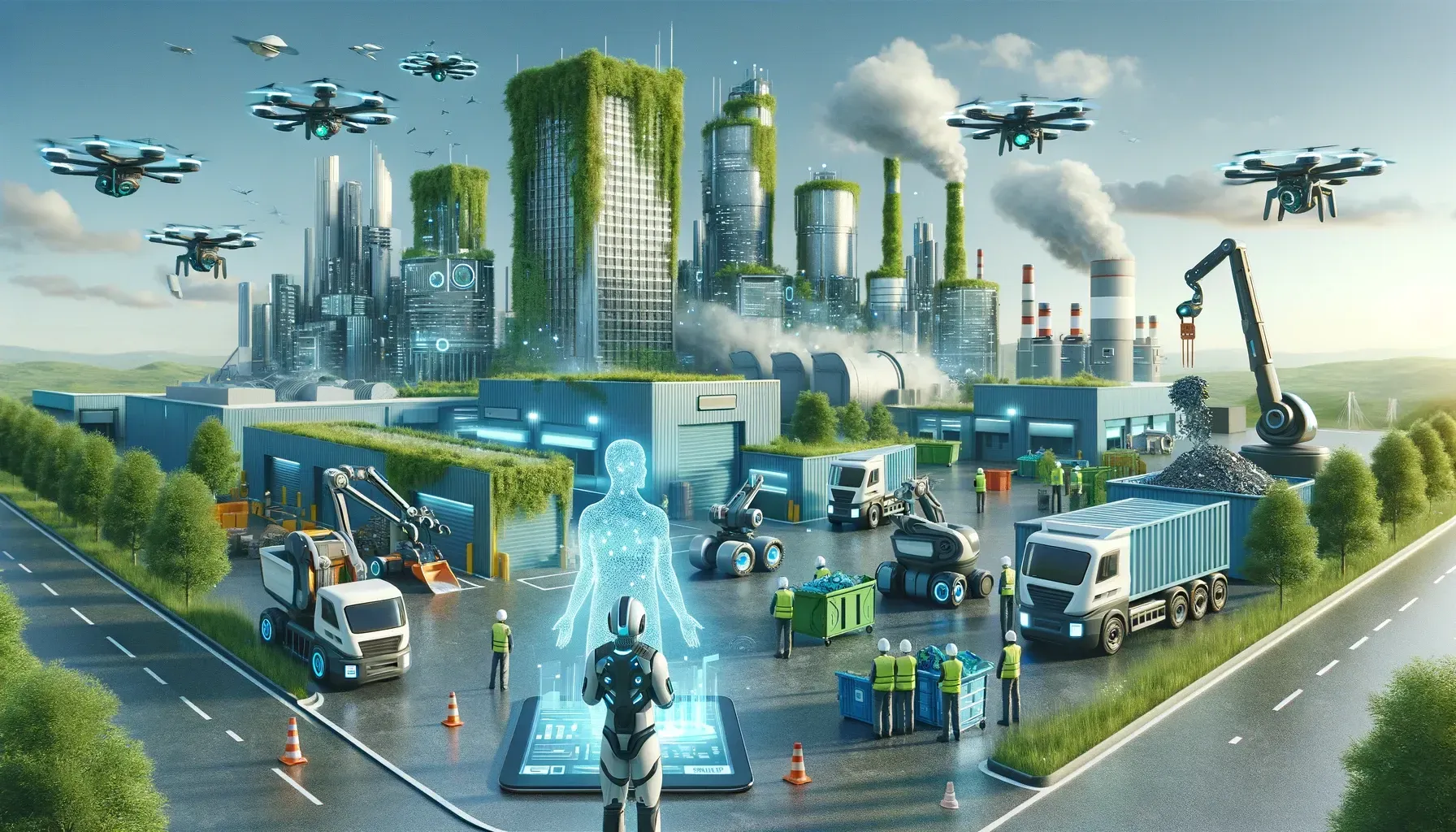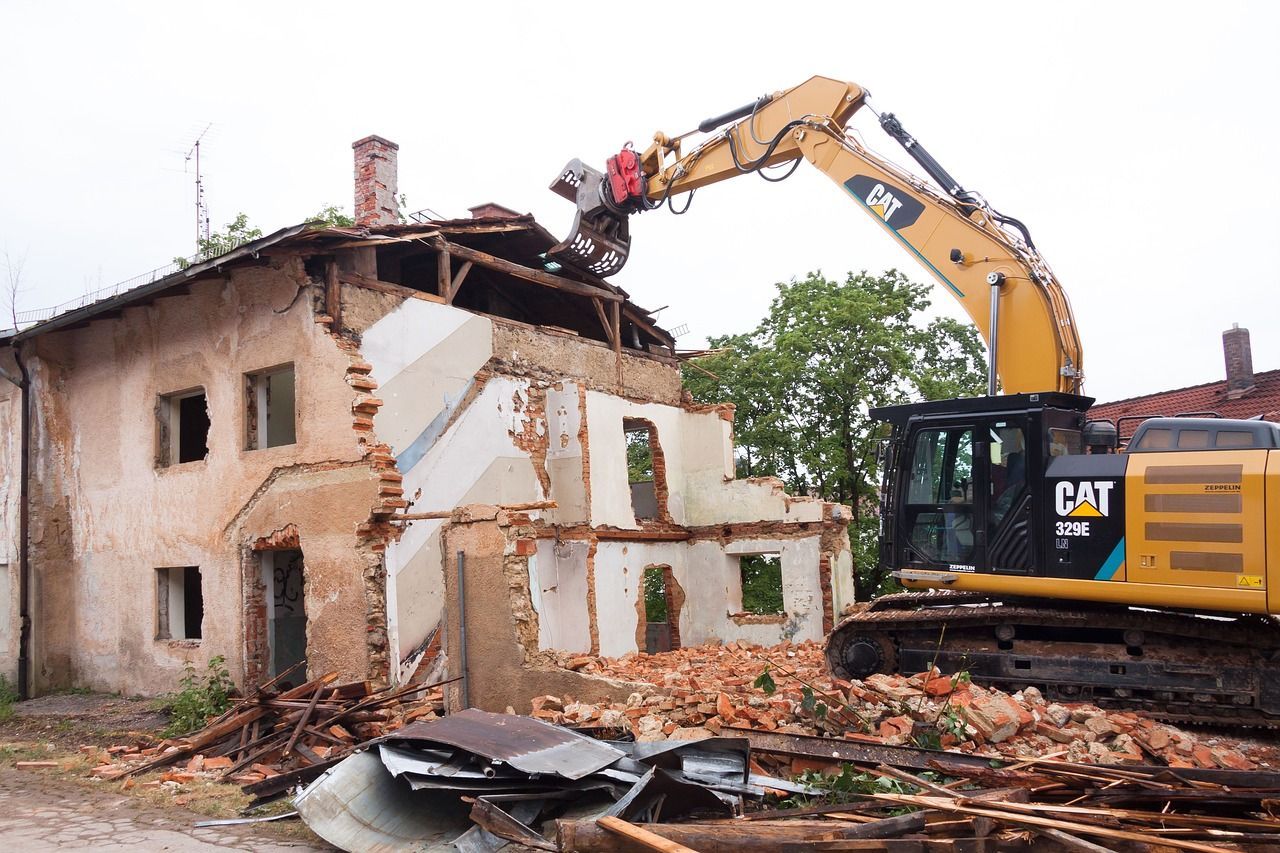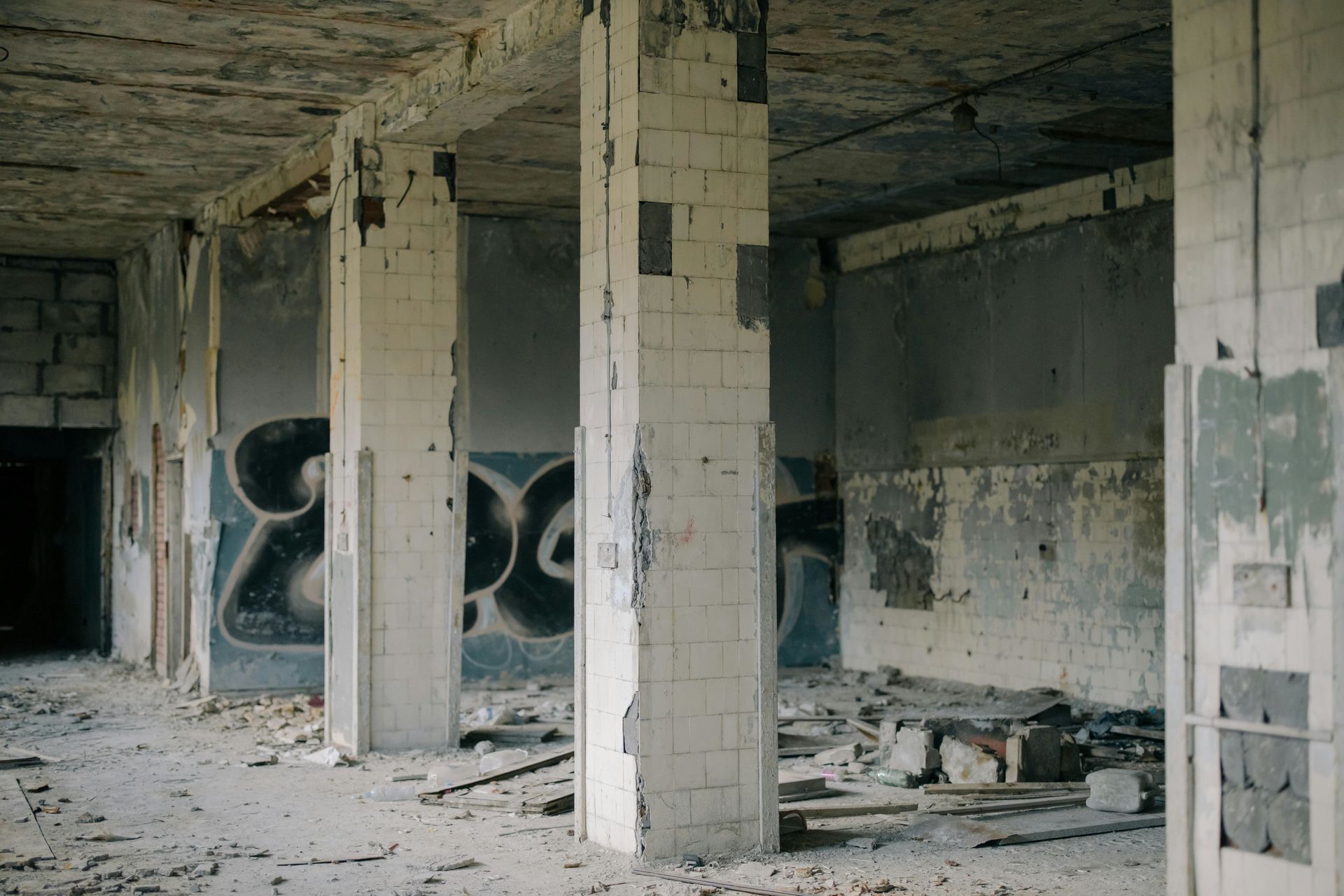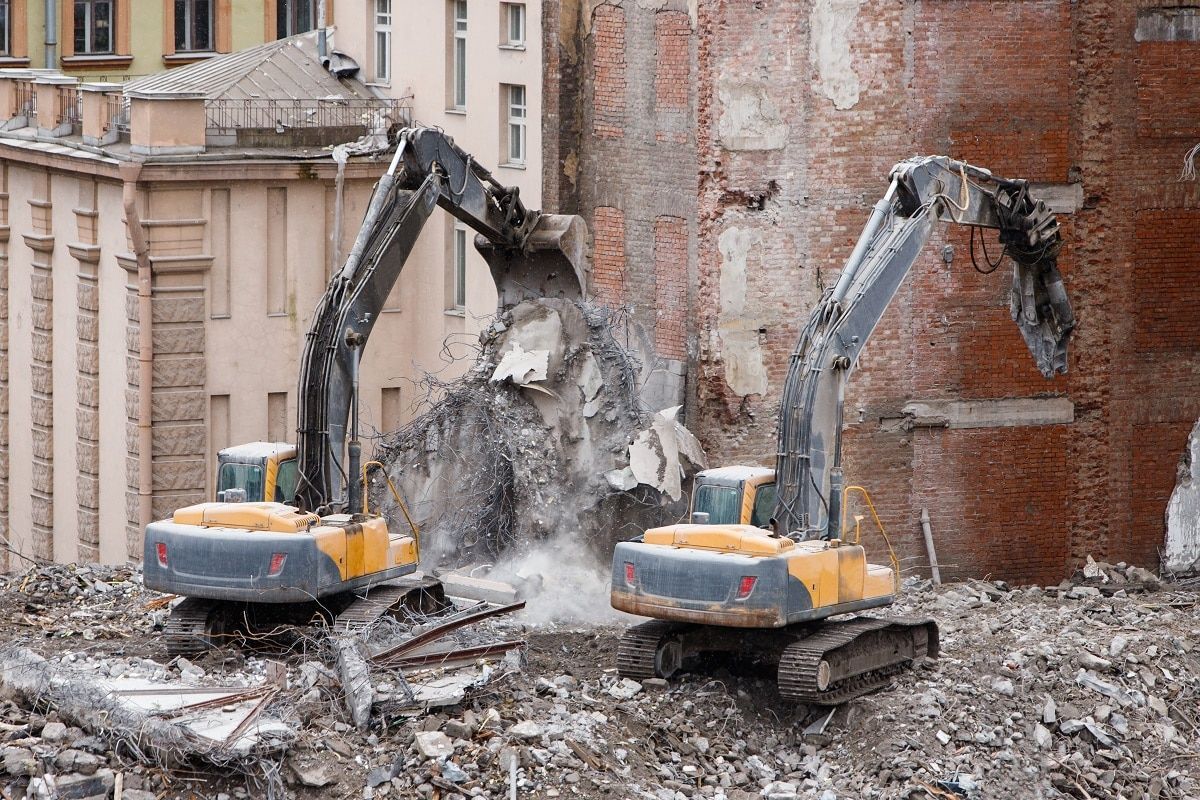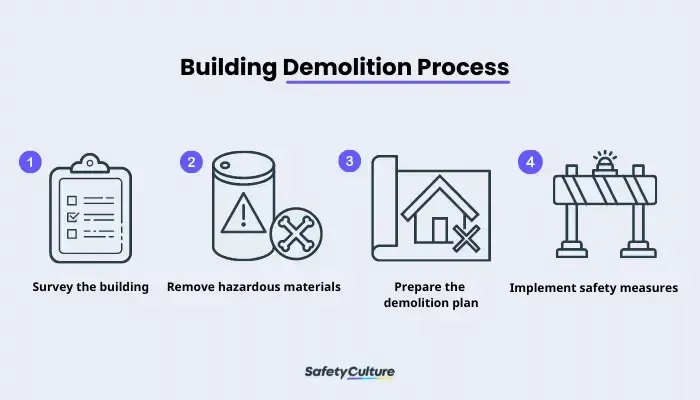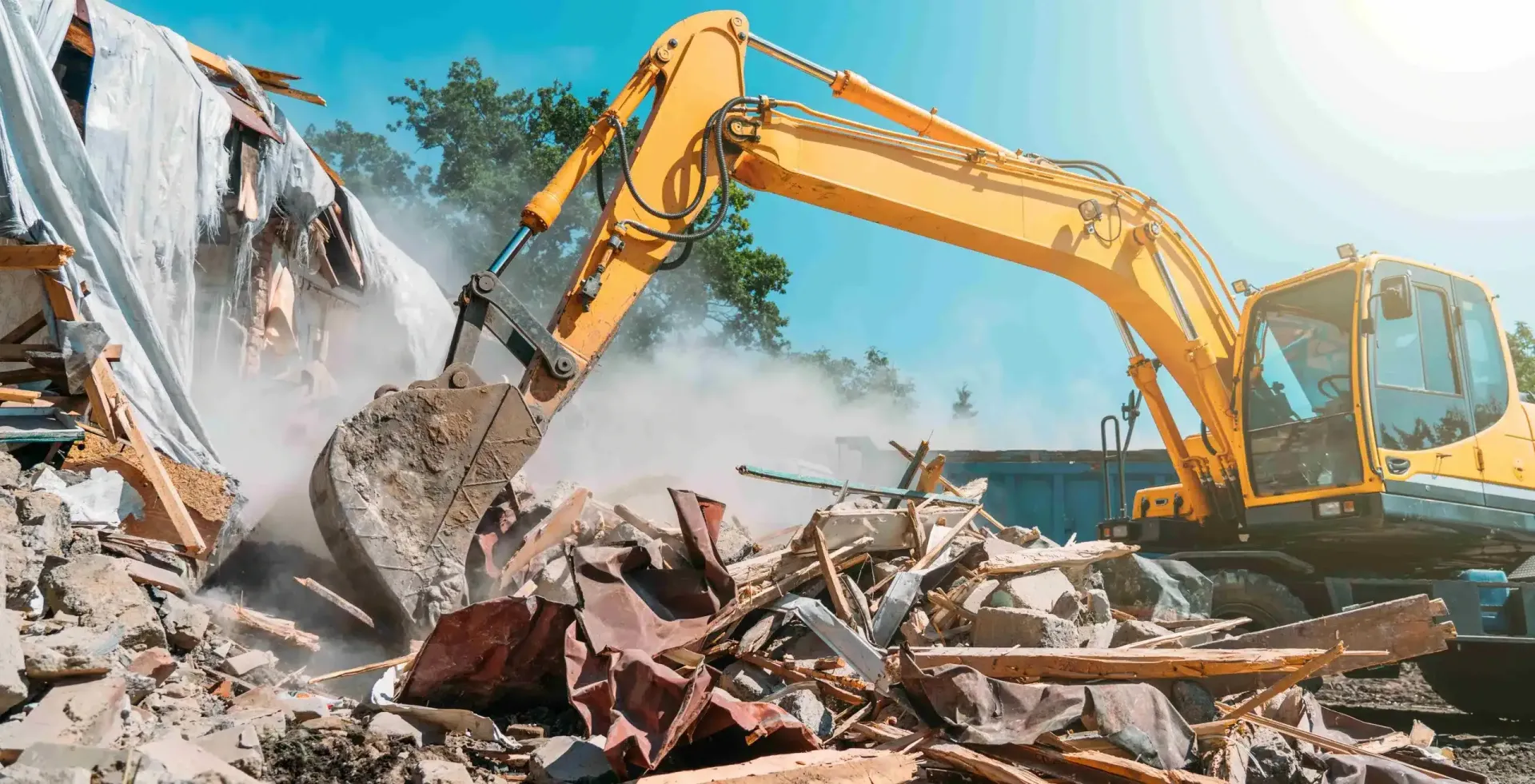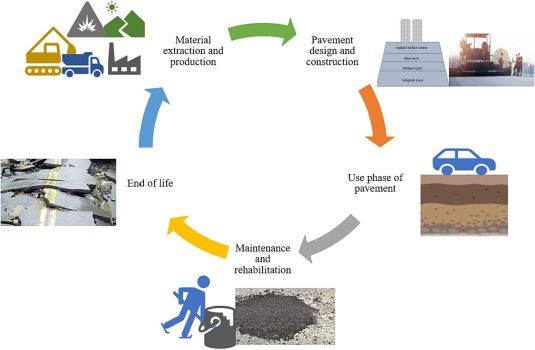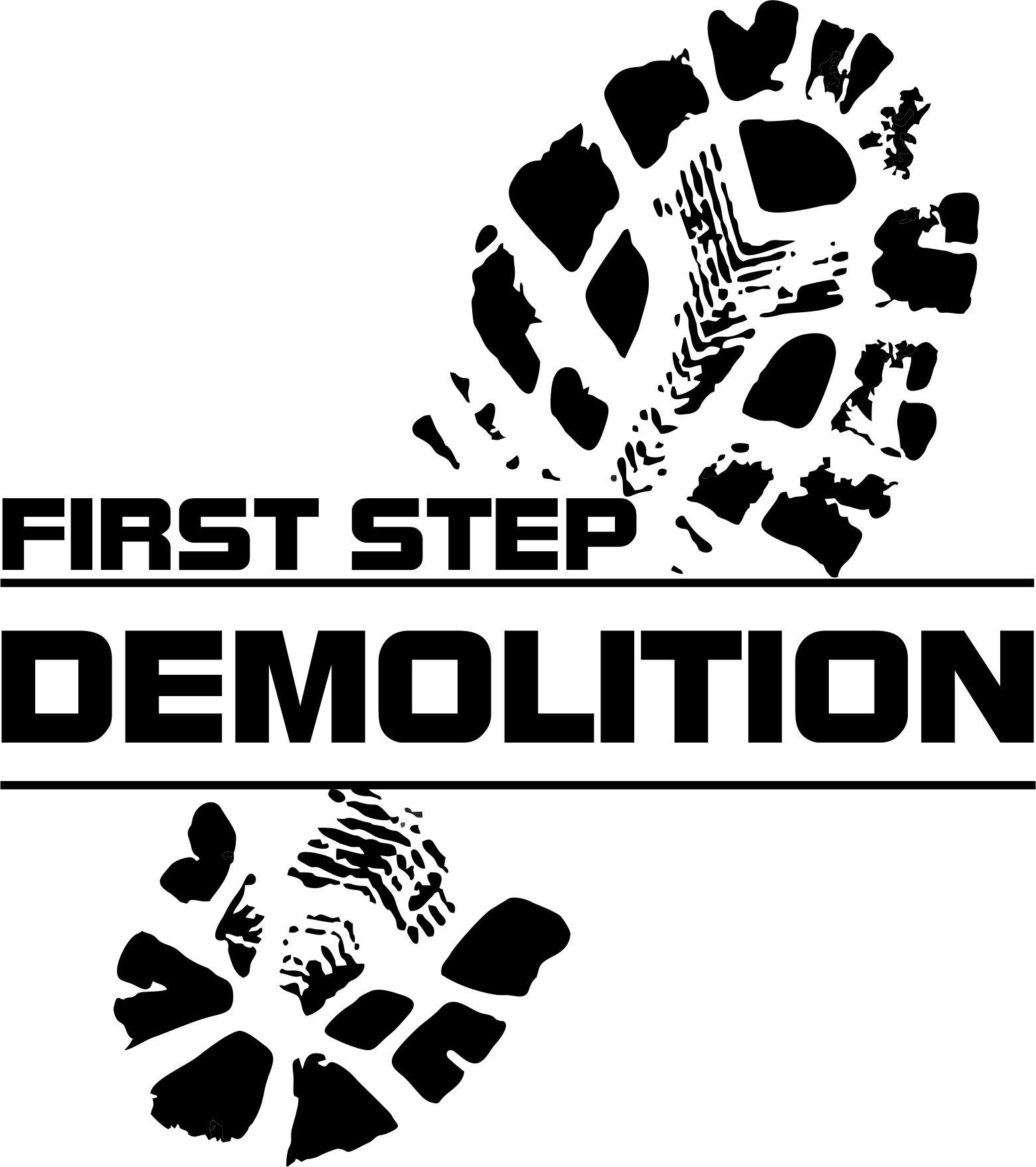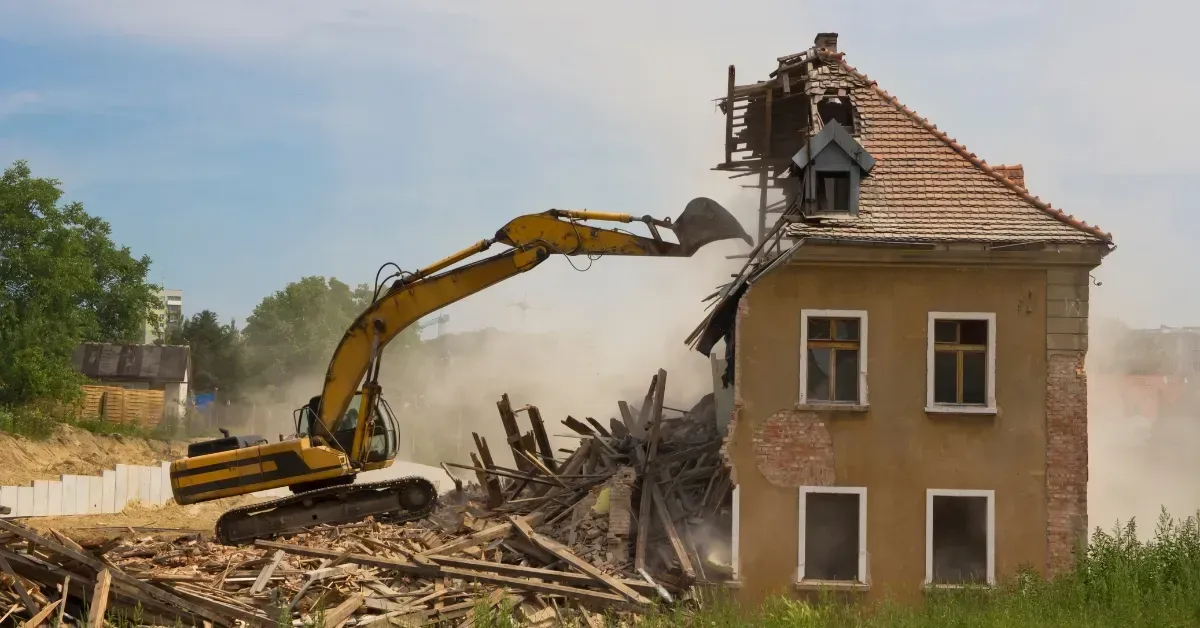Post-Demolition Cleanup for Commercial vs. Residential Sites
As we know, demolition can be a messy endeavor. Also, demolition is just the beginning of transforming a site. Whether for new construction, redevelopment, or returning the land to its natural state, you have to begin with demolition. Once a structure is torn down, the critical phase of post-demolition cleanup begins. This process ensures the site is safe, clean, and ready for its next use. While the fundamentals of cleanup apply universally, there are distinct differences between commercial and residential site cleanups. Hence, in this blog post, we will explore the differences between the two. We will highlight unique challenges, best practices, and tips for successful cleanup in both scenarios.
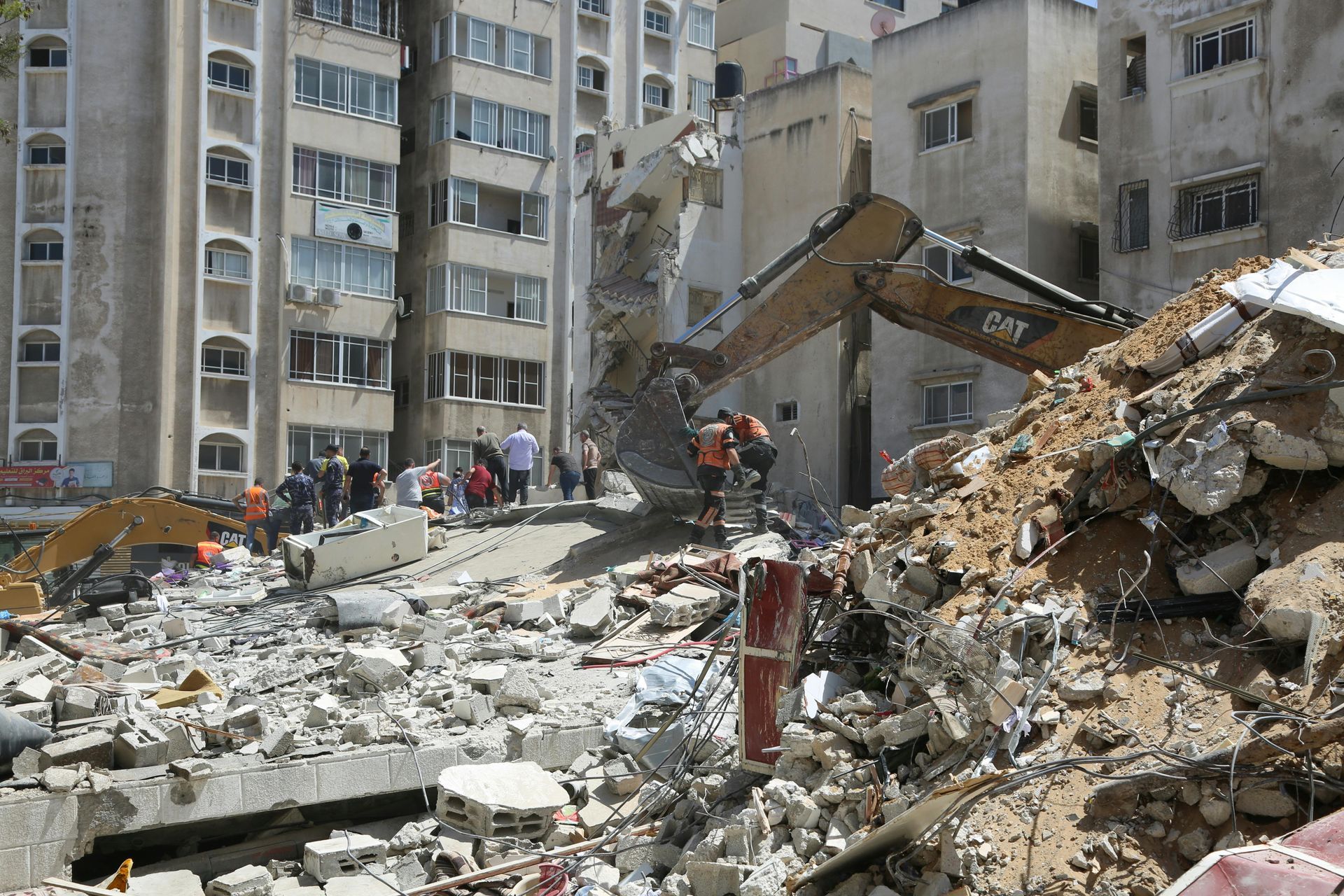
Understanding the Basics of Post-Demolition Cleanup
Simply put, post-demolition cleanup is tidying up the area that has been demolished. Doing a post-demolition cleanup involves the removal of debris, hazardous materials, and contaminants left after a structure is demolished. Sometimes, it includes sorting and recycling materials, disposing of waste, and preparing the site for future use. The goals are to ensure safety, comply with environmental regulations, and create a clean slate for whatever comes next. When you do a commercial or residential demolition, a post-demolition cleanup is a necessity. But what are the differences between the two?
Key Differences Between Commercial and Residential Post-Demolition Cleanup
You may think that a post-demolition cleanup for both commercial and residential sites are just the same thing, but they’re just not. Below are the key differences between a commercial and a residential post-demolition cleanup:
1. Scale and Complexity
Commercial Sites:
Scale: When it comes to scale, commercial demolitions typically involve larger buildings, such as office towers, factories, and shopping centers. The volume of debris and the scale of the cleanup are correspondingly larger.
Complexity: When we talk about complexity, these sites often contain complex systems. For instance, HVAC, plumbing, and electrical installations. It can also possibly contain hazardous materials like asbestos, lead, and industrial chemicals.
Residential Sites:
Scale: As for the scale of a residential demolition, it usually involves single-family homes, apartment buildings, or small complexes. The cleanup scale is considerably smaller and often less complex than that of a commercial building.
Complexity: Residential sites may still contain hazardous materials but typically have fewer complex systems compared to commercial sites.
2. Types of Debris
Commercial Sites:
Debris Types: Some debris of a commercial site include concrete, steel, glass, large HVAC systems, and specialized industrial materials.
Recycling and Disposal: A significant portion of the debris, such as metal and concrete, can be recycled, but proper disposal of hazardous materials requires strict adherence to regulations.
Residential Sites:
Debris Types: Some debris of a residential site commonly include wood, drywall, brick, and household items.
Recycling and Disposal: Many materials, like wood and metal, can be recycled, while others, such as old insulation and certain household items, must be disposed of carefully.
3. Environmental Considerations
Commercial Sites:
Environmental Impact: Larger sites have a greater potential for environmental impact. In addition to that, managing dust, noise, and waste is more challenging and critical in a commercial post-demolition cleanup.
Regulations:
Compliance with environmental regulations is often more stringent. It always requires detailed documentation and adherence to protocols since the coverage of the cleanup is much bigger.
Residential Sites:
Environmental Impact:
Generally lower than commercial sites but still significant, especially in densely populated areas.
Regulations:
Compliance is essential but often less complex than for commercial sites.
Best Practices for Commercial Site Cleanup
When executing commercial site post-demolition cleanup, there are several best practices you can adhere to. Below are the following:
Detailed Planning and Assessment
- Conduct a thorough site assessment to identify all potential hazards.
- Develop a detailed cleanup plan, including timelines, resource allocation, and safety protocols.
Hazardous Material Management
- Identify, handle, and dispose of hazardous materials following local, state, and federal regulations.
- Engage certified professionals for hazardous material removal.
Efficient Debris Removal
- Use heavy machinery for efficient debris removal and sorting.
- Prioritize recycling and proper disposal to minimize environmental impact.
Safety Protocols
- Implement stringent safety measures to protect workers and the surrounding community.
- Regularly train and equip workers with the necessary PPE.
Best Practices for Residential Site Cleanup
There are also best practices you can follow when doing a residential post-demolition cleanup. Below are the following:
Site Assessment
- Conduct a thorough inspection to identify any hazardous materials and unique site challenges.
- Plan for the safe removal and disposal of materials.
Debris Sorting and Recycling
- Sort debris on-site to separate recyclable materials from waste.
- Partner with recycling facilities to ensure maximum material reuse.
Community Considerations
- Minimize noise and dust to reduce the impact on neighboring properties.
- Communicate with the local community about the cleanup process and timeline.
Safety Measures
- Ensure workers use appropriate PPE and follow safety protocols.
- Secure the site to prevent unauthorized access and potential accidents.
Tips for Successful Cleanup in Both Scenarios
- Engage Professionals: Of course, the best you can do is to hire experienced demolition and cleanup contractors who understand the specific challenges of commercial and residential sites.
- Stay Informed: Keep up-to-date with local regulations and best practices in demolition cleanup.
- Prioritize Sustainability: Aim to recycle and reuse materials whenever possible, reducing the environmental footprint of the demolition.
Conclusion
Doing a post-demolition cleanup in whatever demolition project you do is vital. Post-demolition cleanup is a crucial step in the life cycle of both commercial and residential projects. While the fundamental principles are similar, the scale, complexity, and specific challenges vary significantly between the two types of sites. By understanding these differences and implementing best practices, you can ensure a safe, efficient, and environmentally responsible cleanup process, paving the way for successful redevelopment or new construction.
First Step Demolition
If you live in Arizona or around the area and have plans to do a
commercial or a
residential
demolition, First Step Demolition is at your service! Whether you're clearing the way for a new commercial development or preparing a residential site for its next chapter, we got you all covered. Our expert team understands the unique challenges of post-demolition cleanup for both commercial and residential projects. That is why we ensure a safe, efficient, and thorough cleanup every time. We’ll leave no trace behind so you can focus on your next steps.
Don't leave your site cleanup to chance.
Contact First Step Demolition today to learn how our specialized services can make your demolition process seamless and sustainable. Visit our website, call us at
623-248-5000, or email us at
[email protected] to get started. Let us help you create a pristine foundation for your next project. Ensure a clean slate with First Step Demolition today!


